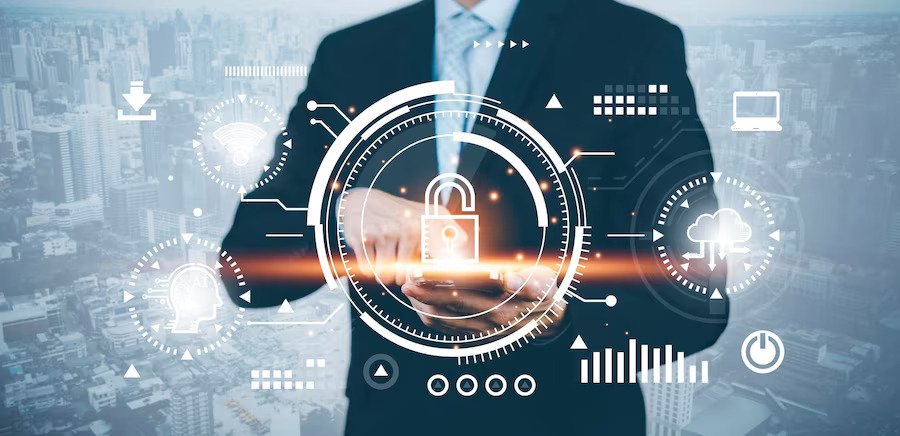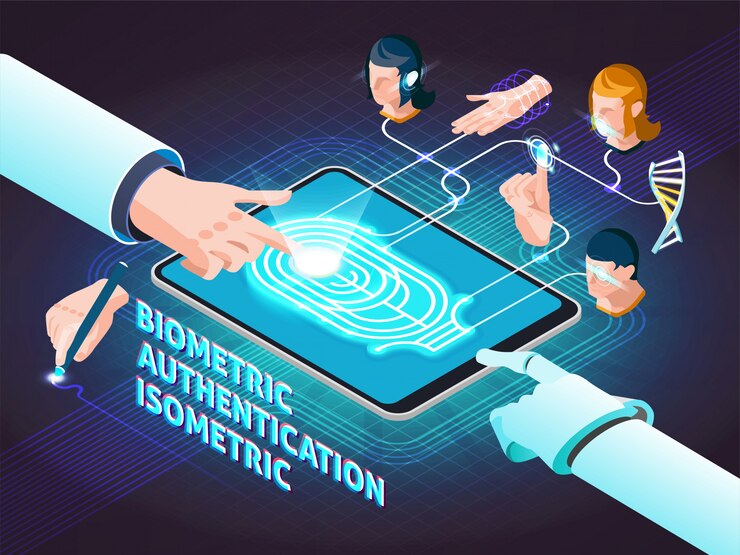Biometric Authentication And Two-Factor Authentication: The Future Of Website And Business Security
5 Mins Read
Published on: 10 August 2023
Last Updated on: 20 March 2025

toc impalement
Impenetrable security is becoming more vital as businesses and websites face increasing cyber threats. Biometric Authentication and Two-Factor Authentication (2FA) stand out as leading defenses.
This article delves into the captivating world of Biometric Authentication and 2FA, highlighting their potential and benefits for the future of secure online interactions.
Tackling the Challenge of Growing Cybercrime Rates
With the rise of cybercrime becoming a pressing concern, threatening individuals and businesses worldwide.
Let’s explore the challenges posed by growing cybercrime rates and the strategies employed to combat this menace:
1. Defense strategies.
To counter cyber threats, advanced security measures such as Biometric Authentication and Two-Factor Authentication services are being implemented to strengthen online security and prevent unauthorized access.
2. Raising awareness.
Educating users about cyber risks and promoting best practices, like avoiding suspicious emails and updating software regularly, is crucial in preventing falling victim to cyber scams and phishing attempts.
3. Collaboration and legislation.
Combating cybercrime requires collaboration between governments, private sectors, and international organizations to share information and coordinate efforts. Strong legal frameworks are necessary to prosecute cybercriminals and deter future attacks. Additionally, biometric kiosks can enhance security by providing identity verification solutions that help prevent fraud and unauthorized access.
4. Investing in cybersecurity.
Both businesses and individuals must invest in robust cybersecurity measures and technologies to proactively defend against cyber threats.
5. Building resilience.
Proactive cybersecurity strategies that focus on incident response and recovery help organizations minimize the impact of cyber incidents and swiftly restore normal operations.
What Is Multi-Factor Or Two-Factor Authentication Exactly
This authentication method provides an extra layer of protection beyond the traditional username and password combination. But what exactly is multi-factor biometric authentication?
At its core, MFA is a security process that requires users to provide multiple forms of identification before gaining access to an account or system. These identification factors fall into three main categories:
A. Something you know:
This includes the traditional username and password, which users are already familiar with. However, MFA takes it a step further by adding additional layers.
B. Something you have:
This factor involves a physical item that the user possesses, such as a smartphone, security token, or smart card. These items generate one-time codes or respond to authentication challenges, ensuring only authorized users can access the account.
C. Something you are:
This factor relies on biometric data unique to the individual, such as iris scans, facial recognition, and, most importantly, fingerprint scans. Biometric multi-factor authentication provides an extra level of security as they are difficult to replicate or forge.
By combining at least two of these factors, Multi-Factor or Two-Factor Authentication significantly reduces the risk of unauthorized access, even if one factor is compromised.
Biometrics In Multi-Factor Authentication

Biometric Multi-Factor Authentication (MFA) has become an increasingly popular method to enhance digital security. Biometrics leverage unique physical and behavioral characteristics, like fingerprints, facial recognition, iris scans, and voice patterns, to verify a user’s identity.
While biometric MFA offers several advantages in terms of security and user experience, it also comes with some potential drawbacks that need to be carefully considered. Here are some biometric pros and cons:
What Are The Pros of Biometric 2FA?
Here are some of the advantages of this security method to consider:
1. Enhanced security.
Biometrics-based authentication adds an extra layer of security by using distinctive physiological or behavioral traits that are difficult to replicate or steal.
2. Convenience and user experience.
Biometric-based authentication is seamless and user-friendly. It offers users the ability to access their personal accounts with just a facial recognition or fingerprint biometric. Fingerprint biometric authentication is a highly secure and widely utilized method of verifying an individual’s identity. It relies on the unique patterns and ridges present on a person’s fingertip to grant access to sensitive information or secure locations. By capturing and comparing these distinctive features, fingerprint authentication provides a robust and convenient means of safeguarding personal data, as well as ensuring authorized access to various electronic devices and systems. Hence, there is no need to remember complicated passwords.
3. Lower risk of credential theft.
Biometric two-factor authentication data is unique to each individual and is not susceptible to common credential theft methods, such as phishing or keylogging.
4. Fast authentication.
Biometric verification is typically faster than traditional password-based methods, allowing for swift and efficient user authentication.
What Are the Cons of Biometric 2FA?
The limitations of the 2FA include:
A. Privacy and data protection concerns.
Storing and processing biometric data can raise privacy concerns. If improperly handled or compromised, biometric information can be difficult to reset, unlike passwords, which can be changed.
B. Accuracy and reliability.
While biometric technology has advanced significantly, it is not foolproof. Factors like lighting conditions, age, and injuries can sometimes affect the accuracy of biometric scansю
C. Risk of spoofing.
Biometric systems may be susceptible to spoofing attacks, where malicious actors use forged biometric data to deceive the system and gain unauthorized access.
D. Non-revocable:
Unlike passwords, which can be changed if compromised, biometric traits are immutable. If biometric data is breached, individuals are left vulnerable to potential identity theft.
E. Integration challenges:
Implementing biometric MFA can be complex and costly, particularly for organizations with legacy systems that may require significant upgrades to support authentication biometrics.
The Future Of Website And Business Security With Two-Factor Authentication
As businesses and websites prioritize safeguarding sensitive data and protecting user identities, MFA biometrics emerges as a crucial tool to counter the growing cyber risks. You can learn more about the different types of two-factor authentication services available for businesses to use on the BSG website.
Conclusion
In conclusion, Multi-Factor Authentication (MFA) stands at the forefront of the future of website and business security. Its ability to fortify digital defenses through biometrics and additional layers of verification promises a safer online environment.
As you explore the world of MFA, consider leveraging the expertise and cutting-edge services of BSG’s Two-Factor Authentication solutions. Strengthen your security infrastructure subtly and confidently, safeguarding your digital assets and ensuring a secure path forward.
Read Also:


















Comments Are Closed For This Article